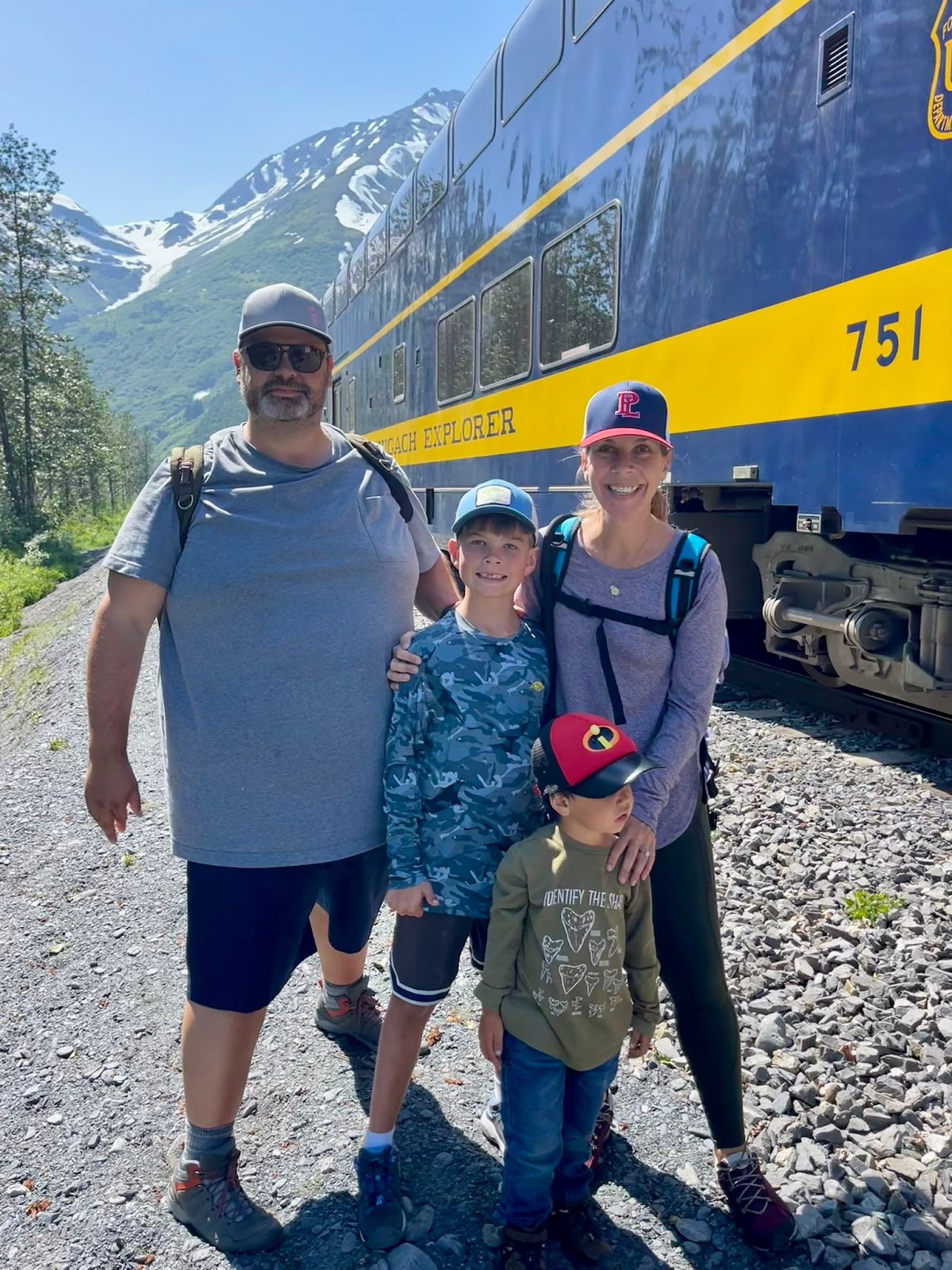Taking Work-Based Learning to the Next Level: Lessons from Alaska
Key Points
-
Consider opportunities in your community where you can connect with other industries and get inspired by the work that students could be doing.
-
Like high school students enrolled in a special program in the Anchorage School District.
-
There is a world of learning that awaits not just our students, but also our educators.

By: Nicole Assisi
It’s not every day you find yourself on a train ride through the Alaskan wilderness, but this summer I did. My family, including my two young energetic children, was fortunate enough to travel from Whittier to Anchorage via the great Alaskan railroad.
The scenery was beautiful. My boys loved seeing the moose we passed and the long tunnels to Whittier, while I marveled at the majestic mountains and soothing scenery of ice-capped mountains. It was an experience of a lifetime.

In addition to the spectacular scenes and sites, one of the most lovely surprises was listening to our tour guides Faith and Zav; high school students enrolled in a special program in the Anchorage School District.
The district has a 10-week program where students learn about the flora, fauna and history of Alaska so they can work (yes, paid work) in the tourist industry. Our tour guides were incredibly well-informed, and eagerly shared with me the process of training and applying for the job. Connecting learning to real-world opportunities is powerful–and this was clearly the case for these students.
In Thrive’s recent podcast with Jay Roscup from Finger Lakes New York, we talked about what it means to engage students in meaningful experiences in high school and honor them for their time and skills. Many students depend on work and strong work-based programs. Jay talked about his Steady Work Program which engaged at promise youth in work programs. Jay’s program is one of the best in the nation for engaging students in paid work and Anchorage is right there with him.
Through my work in schools, I know that not all programs are created equal. What makes a strong career preparation and work-based learning program? What makes others fall flat? Here is what I have learned through these powerful programs:
I invite you to consider opportunities in your community where you can connect with other industries and get inspired by the work that students could be doing.
Nicole Assisi
1. Make it relevant. Learn about needs in your community. Just like Finger Lakes and Anchorage responded to their community’s needs, identify an actual issue or topic of interest in your own community that young people can engage in. A great place to start is by directly asking the students about what they see as emerging needs or issues. Then use that information to pursue partnerships or possible work-based experiences (and don’t be shy to ask the students to help).
2. Focus your energy. After you find the need in your community, respond to it. You cannot do it all, so whether it is agriculture, tourism, or early childhood education, find what is needed and work with students to become the solution. There are often a range of jobs that help fill a need, so even if a student doesn’t like agriculture, they likely need a marketer or a social media manager. Tap into the interest of learners and the local needs for a winning combination for work-based learning. Remember, finding a good partner who understands that you really want to provide actual work experiences and who trusts students to be a part of their team can sometimes take time. Focus on what you can do with those partners and expand the possibilities. Be patient as you build trust. Be prepared to work closely to make things better over time. Those relationships will help you go far!
3. Make connections. Connect what happens in school to a world where those skills are critical and necessary. Not only does this motivate learners, but they also get to start building a network. Businesses can play a critical role by helping to create links between academic subjects and the world of work. By connecting education and business, learning can be rooted (sometimes!) in work-based problems that allow students to develop and apply their learning.
4. Provide the training. Do not set students up to fail. There are critical skills that students need to be taught. A common pitfall is to assume that these skills are already something they “should” know. While the workplace is changing, there are still some foundational skills that will help set students up for success like how to introduce themselves, how to dress for the job, and how to communicate important information or ask questions. Don’t assume students know these things already. Teach, practice and remind students of these skillsIn addition to these tips, I’d encourage you to spend time in different workplace settings, getting to know emerging jobs and trends. As educators, we are often insulated from what is happening in other professional spaces. Take some time to get acquainted with the workspaces that our students will enter.
While I cannot take you all with me on my train ride in Alaska, I invite you to consider opportunities in your community where you can connect with other industries and get inspired by the work that students could be doing. Take a community walk, set up a lunch, and learn with businesses close to you. There is a world of learning that awaits not just our students, but also our educators. While my family doesn’t always love that I bring work on my trips, when my trips turn into work inspiration, it is the best of both worlds.
This post is part of our New Pathways campaign sponsored by ASA, Stand Together and the Walton Family Foundation.




0 Comments
Leave a Comment
Your email address will not be published. All fields are required.